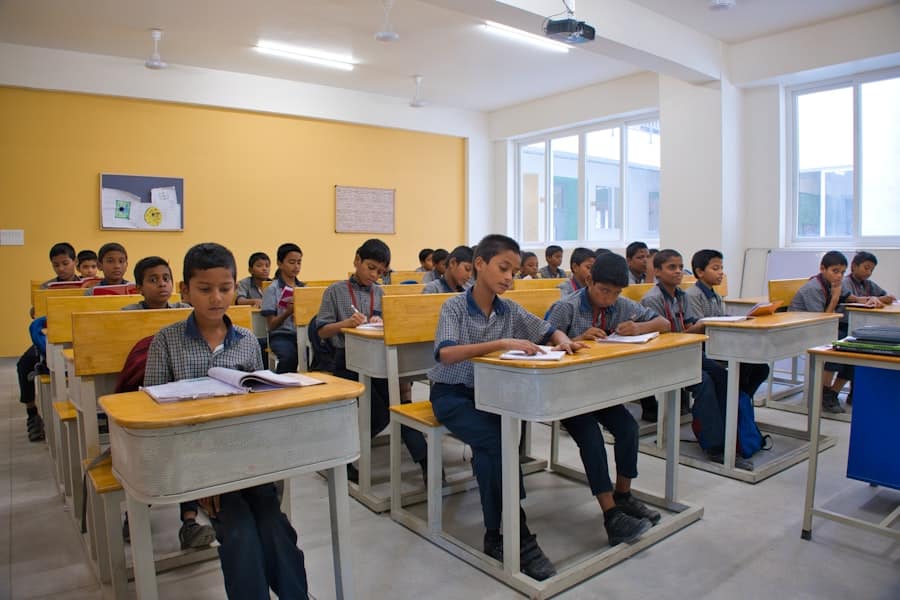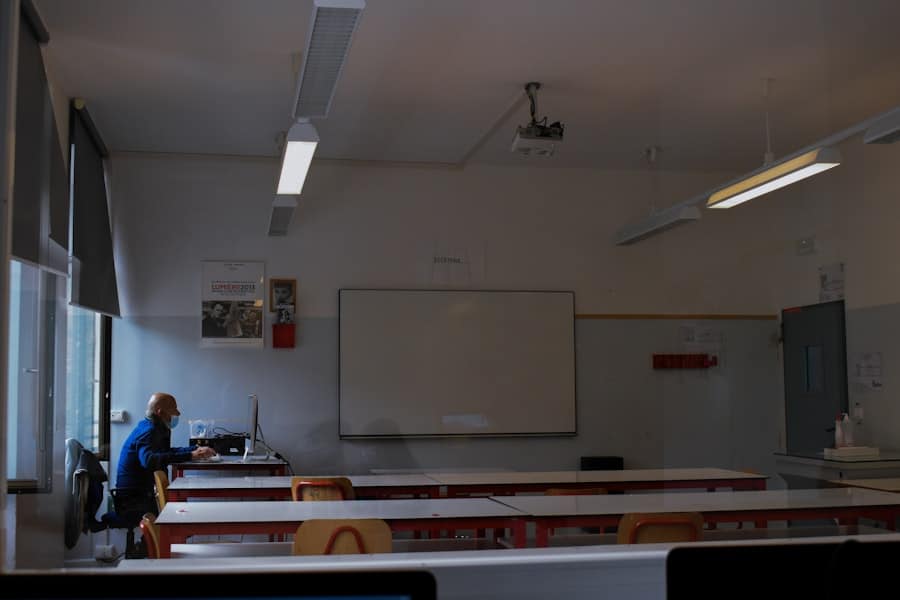In the rapidly evolving landscape of education, the concept of smart learning spaces has emerged as a transformative approach to teaching and learning, particularly for children.
Smart learning spaces integrate various digital tools, such as interactive whiteboards, tablets, and virtual reality, creating a dynamic setting where children can explore, collaborate, and innovate.
The goal is to move beyond traditional classroom settings, which often rely on rote memorization and passive learning, to a more holistic approach that emphasizes critical thinking, creativity, and problem-solving skills. The integration of smart learning spaces is not merely about incorporating technology; it is about reimagining the educational experience. These spaces are often flexible and adaptable, allowing for different configurations that support various teaching methods and learning styles.
For instance, a classroom can be transformed from a lecture-based setup to a collaborative workspace where students engage in group projects or hands-on activities. This adaptability is crucial in meeting the needs of diverse learners, ensuring that every child has the opportunity to thrive in an environment that resonates with their individual learning preferences.
Key Takeaways
- Smart learning spaces for kids are designed to enhance the learning experience through the use of technology and AI.
- Personalized learning is crucial for children as it allows them to learn at their own pace and in a way that suits their individual needs and learning styles.
- AI technology is transforming education by providing personalized learning experiences, automating administrative tasks, and enabling adaptive learning systems.
- AI plays a key role in creating personalized learning experiences by analyzing student data, providing tailored content, and offering real-time feedback.
- AI-powered smart learning spaces offer advantages such as personalized learning, interactive experiences, and the ability to track and analyze student progress.
The Importance of Personalized Learning for Children
Personalized learning is increasingly recognized as a cornerstone of effective education, particularly for children who have unique learning styles, interests, and paces. This approach tailors educational experiences to meet the specific needs of each student, allowing them to progress at their own speed while receiving support that aligns with their individual strengths and weaknesses. The significance of personalized learning lies in its ability to foster a sense of ownership over one’s education, encouraging children to take an active role in their learning journey.
When students feel that their educational experiences are tailored to them, they are more likely to engage deeply with the material and develop a love for learning. Moreover, personalized learning can help bridge gaps in knowledge and skills that may exist among students. In traditional classrooms, the one-size-fits-all approach often leaves some students behind while others may feel unchallenged.
By implementing personalized learning strategies, educators can identify specific areas where a child may struggle and provide targeted interventions. For example, if a student excels in mathematics but struggles with reading comprehension, personalized learning allows teachers to focus on enhancing reading skills while maintaining the student’s interest in math through advanced problem-solving tasks. This targeted approach not only boosts academic performance but also builds confidence and resilience in young learners.
How AI Technology is Revolutionizing Education

Artificial intelligence (AI) is at the forefront of revolutionizing various sectors, and education is no exception. The integration of AI technology into educational settings is reshaping how knowledge is delivered and consumed. AI systems can analyze vast amounts of data to identify patterns in student performance, enabling educators to make informed decisions about curriculum design and instructional strategies.
This data-driven approach allows for a more nuanced understanding of how students learn, paving the way for innovations that enhance educational outcomes. One of the most significant contributions of AI in education is its ability to provide real-time feedback to both students and teachers. For instance, AI-powered platforms can assess a student’s understanding of a concept through quizzes or interactive exercises and offer immediate feedback on their performance.
This instant response mechanism not only helps students identify areas for improvement but also allows teachers to adjust their instructional methods based on the collective performance of their class. Furthermore, AI can facilitate adaptive learning experiences where the difficulty level of tasks adjusts according to a student’s proficiency, ensuring that each learner is appropriately challenged.
The Role of AI in Creating Personalized Learning Experiences
AI plays a pivotal role in crafting personalized learning experiences by harnessing data analytics and machine learning algorithms to tailor educational content to individual students. Through continuous assessment of a learner’s progress, AI systems can curate resources that align with their interests and academic needs. For example, if a student shows a particular affinity for science fiction literature, an AI-driven platform might recommend books or articles within that genre that also incorporate scientific concepts, thereby merging personal interests with educational objectives.
Additionally, AI can facilitate differentiated instruction by providing teachers with insights into each student’s learning trajectory. Educators can utilize these insights to design lesson plans that cater to varying levels of understanding within the same classroom. For instance, if data indicates that a group of students struggles with a specific math concept while others excel, teachers can create small groups for targeted instruction or offer enrichment activities for advanced learners.
This level of customization not only enhances engagement but also fosters a more inclusive classroom environment where every child feels valued and supported.
Advantages of AI-Powered Smart Learning Spaces
The advantages of AI-powered smart learning spaces are manifold, significantly enhancing the educational experience for children. One primary benefit is the ability to create immersive learning environments that stimulate curiosity and engagement. With tools such as augmented reality (AR) and virtual reality (VR), students can explore complex subjects in ways that were previously unimaginable.
For instance, a history lesson could transform into an interactive journey through ancient civilizations, allowing students to visualize historical events and contexts firsthand. Moreover, AI-powered smart learning spaces promote collaboration among students. By utilizing technology that facilitates group work—such as shared digital platforms or collaborative software—children can engage in projects that require teamwork and communication skills.
This collaborative approach not only mirrors real-world scenarios but also helps develop essential social skills that are crucial for future success. Additionally, these spaces often incorporate gamification elements that make learning enjoyable and competitive in a healthy way, further motivating students to participate actively in their education.
Challenges and Concerns of Implementing AI in Education

Despite the numerous benefits associated with AI in education, several challenges and concerns must be addressed before widespread implementation can occur. One significant issue is the digital divide; not all students have equal access to technology or high-speed internet connections. This disparity can exacerbate existing inequalities in education, leaving some children at a disadvantage while others thrive in tech-rich environments.
Ensuring equitable access to AI-powered tools is essential for creating inclusive smart learning spaces. Another concern revolves around data privacy and security. The use of AI in education often involves collecting sensitive information about students’ performance and personal details.
Parents and educators must grapple with questions regarding how this data is stored, who has access to it, and how it is used. Striking a balance between leveraging data for personalized learning and protecting student privacy is crucial. Educational institutions must implement robust policies and practices to safeguard this information while still harnessing the power of AI technology.
Examples of AI-Powered Smart Learning Spaces for Kids
Several innovative examples illustrate how AI-powered smart learning spaces are being implemented across various educational settings. One notable instance is the use of intelligent tutoring systems like Carnegie Learning’s MATHia software. This platform employs AI algorithms to assess individual student performance in mathematics and provides personalized feedback and resources tailored to each learner’s needs.
Schools utilizing MATHia have reported improved student outcomes as learners receive immediate support aligned with their unique challenges. Another example can be found in schools that have adopted VR technology for immersive learning experiences. For instance, Google Expeditions allows students to take virtual field trips around the world without leaving their classrooms.
By integrating VR into subjects like geography or science, educators can create engaging lessons that captivate students’ imaginations while deepening their understanding of complex concepts. These examples highlight how AI-powered smart learning spaces are not just theoretical constructs but practical applications that enhance educational experiences for children.
The Future of AI in Education and Smart Learning Spaces
Looking ahead, the future of AI in education promises even more exciting developments as technology continues to advance at an unprecedented pace. As machine learning algorithms become more sophisticated, we can expect increasingly personalized educational experiences tailored to each child’s unique needs and preferences. The potential for adaptive learning environments will expand significantly, allowing educators to create highly customized curricula that respond dynamically to student progress.
Moreover, as AI technology becomes more integrated into everyday life, its presence in educational settings will likely become ubiquitous. Future classrooms may feature intelligent assistants capable of answering questions in real-time or providing additional resources based on individual student inquiries.
In conclusion, the integration of AI technology into smart learning spaces represents a significant leap forward in educational practices for children. By embracing personalized learning approaches powered by AI, educators can create dynamic environments that cater to diverse learners’ needs while preparing them for an increasingly complex world. As we navigate the challenges associated with this transformation, it is essential to prioritize equity and privacy while harnessing the full potential of technology to enrich children’s educational experiences.
In a recent article on AI video generator software, the potential for artificial intelligence to revolutionize personalized learning experiences for children is further explored. By utilizing AI technology, educators and parents can create engaging and interactive content tailored to each child’s unique learning style and preferences. This innovative approach aligns with the concept of personalized smart learning spaces for kids, as discussed in the original article. Additionally, advancements in consumer technology breakthroughs, as highlighted in CNET’s latest coverage, play a crucial role in shaping the future of education and learning environments. Furthermore, the review of Xiaomi smartwatches in this article underscores the importance of wearable technology in enhancing personalized learning experiences for children.
FAQs
What is AI?
AI, or artificial intelligence, refers to the simulation of human intelligence in machines that are programmed to think and act like humans. This includes tasks such as learning, problem-solving, and decision-making.
What are personalized smart learning spaces for kids?
Personalized smart learning spaces for kids are educational environments that use technology, such as AI, to tailor the learning experience to each individual child’s needs, preferences, and learning style. These spaces can include interactive digital content, adaptive learning platforms, and smart devices that track and analyze a child’s progress.
How does AI contribute to creating personalized smart learning spaces for kids?
AI contributes to creating personalized smart learning spaces for kids by analyzing data on each child’s learning patterns, strengths, and weaknesses. This data is then used to customize the learning experience, providing individualized content, feedback, and support to help each child reach their full potential.
What are the benefits of personalized smart learning spaces for kids?
Some benefits of personalized smart learning spaces for kids include improved engagement, better retention of information, increased motivation to learn, and the ability to address each child’s unique learning needs. Additionally, these spaces can help educators and parents track a child’s progress and provide targeted support.
Are there any concerns or challenges associated with using AI in personalized smart learning spaces for kids?
Some concerns and challenges associated with using AI in personalized smart learning spaces for kids include data privacy and security, the potential for over-reliance on technology, and the need to ensure that AI algorithms are fair and unbiased. It is important to address these concerns and challenges to ensure that personalized smart learning spaces are safe and effective for children.

